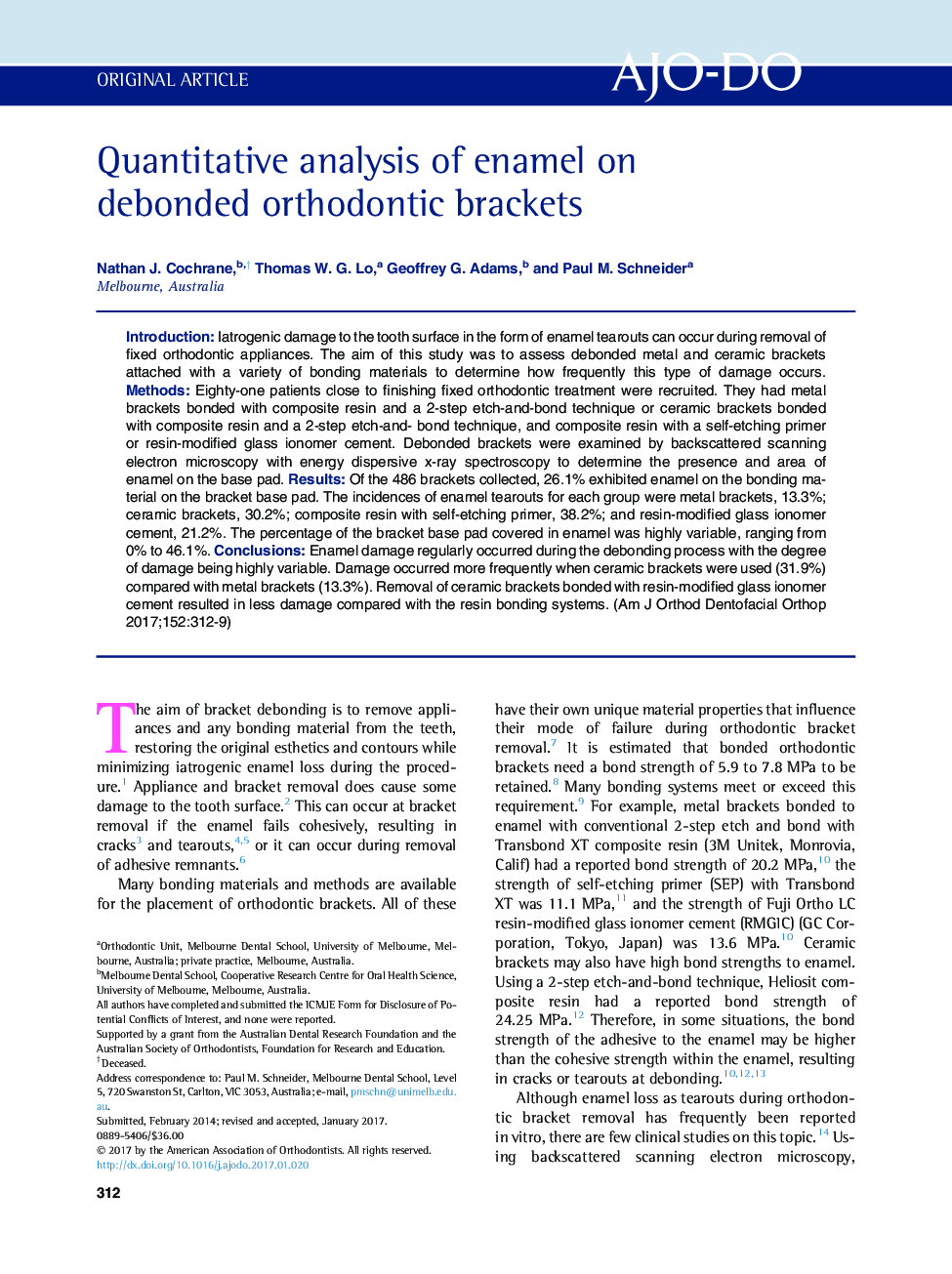| Article ID | Journal | Published Year | Pages | File Type |
|---|---|---|---|---|
| 5637447 | American Journal of Orthodontics and Dentofacial Orthopedics | 2017 | 8 Pages |
â¢Enamel damage was more frequent with ceramic bracket removal than metal brackets.â¢Damage was less when ceramic brackets were attached with RMGIC than composite resin.â¢Ceramic bracket fracture was greatest with 2-step etch-and-bond composite resin.â¢The most common bond failure site was the bracket-bonding material interface.â¢Maxillary lateral incisors had a greater risk of damage than central incisors and canines.
IntroductionIatrogenic damage to the tooth surface in the form of enamel tearouts can occur during removal of fixed orthodontic appliances. The aim of this study was to assess debonded metal and ceramic brackets attached with a variety of bonding materials to determine how frequently this type of damage occurs.MethodsEighty-one patients close to finishing fixed orthodontic treatment were recruited. They had metal brackets bonded with composite resin and a 2-step etch-and-bond technique or ceramic brackets bonded with composite resin and a 2-step etch-and- bond technique, and composite resin with a self-etching primer or resin-modified glass ionomer cement. Debonded brackets were examined by backscattered scanning electron microscopy with energy dispersive x-ray spectroscopy to determine the presence and area of enamel on the base pad.ResultsOf the 486 brackets collected, 26.1% exhibited enamel on the bonding material on the bracket base pad. The incidences of enamel tearouts for each group were metal brackets, 13.3%; ceramic brackets, 30.2%; composite resin with self-etching primer, 38.2%; and resin-modified glass ionomer cement, 21.2%. The percentage of the bracket base pad covered in enamel was highly variable, ranging from 0% to 46.1%.ConclusionsEnamel damage regularly occurred during the debonding process with the degree of damage being highly variable. Damage occurred more frequently when ceramic brackets were used (31.9%) compared with metal brackets (13.3%). Removal of ceramic brackets bonded with resin-modified glass ionomer cement resulted in less damage compared with the resin bonding systems.
